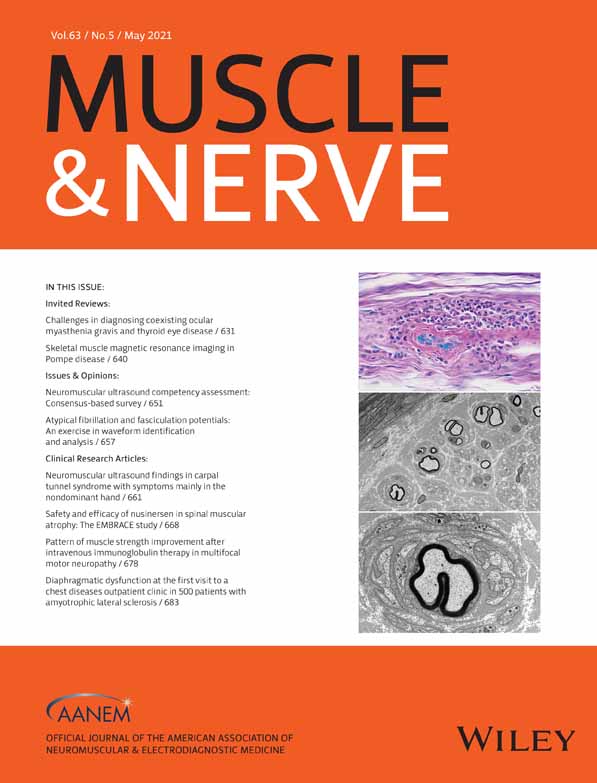Peripheral nerve hyperexcitability syndrome: A clinical, electrophysiological, and immunological study
Yimin Wu and Jiayu Shi contributed to the work equally and should be regarded as co-first authors.
Abstract
Introduction
Peripheral nerve hyperexcitability syndrome (PNHS) is characterized by muscle fasciculations and spasms. Nerve hyperexcitability and after-discharges can be observed in electrophysiological studies. Autoimmune mechanisms play a major role in the pathophysiology of primary PNHS.
Methods
We retrospectively conducted a case–control study recruiting patients with clinical and electrophysiological features of PNHS. Control patients were diagnosed with other neuronal or muscular diseases. Contactin-associated protein2 (CASPR2) and leucine-rich glioma-inactivated1 (LGI1) antibodies were examined.
Results
A total of 19 primary PNHS patients and 39 control patients were analyzed. The most common symptoms for the case group were fasciculations (11/19) and muscle spasms (13/19). Case group patients were likely to demonstrate electrodiagnostic findings of nerve hyperexcitability (17/19) and after-discharges in the tibial nerve (19/19). We found high prevalence of CASPR2 (9/19) and LGI1 (6/19) antibodies in the case group.
Discussion
Primary PNHS patients were likely to show after-discharges in the tibial nerve. The pathogenesis of PNHS is autoimmune CASPR2 and LGI1 antibodies are possible pathogenic antibodies for primary PNHS.
CONFLICTS OF INTEREST
None of the authors has any conflict of interest to disclose.
Open Research
DATA AVAILABILITY STATEMENT
The data that support the findings of this study are available from the corresponding author upon reasonable request.




